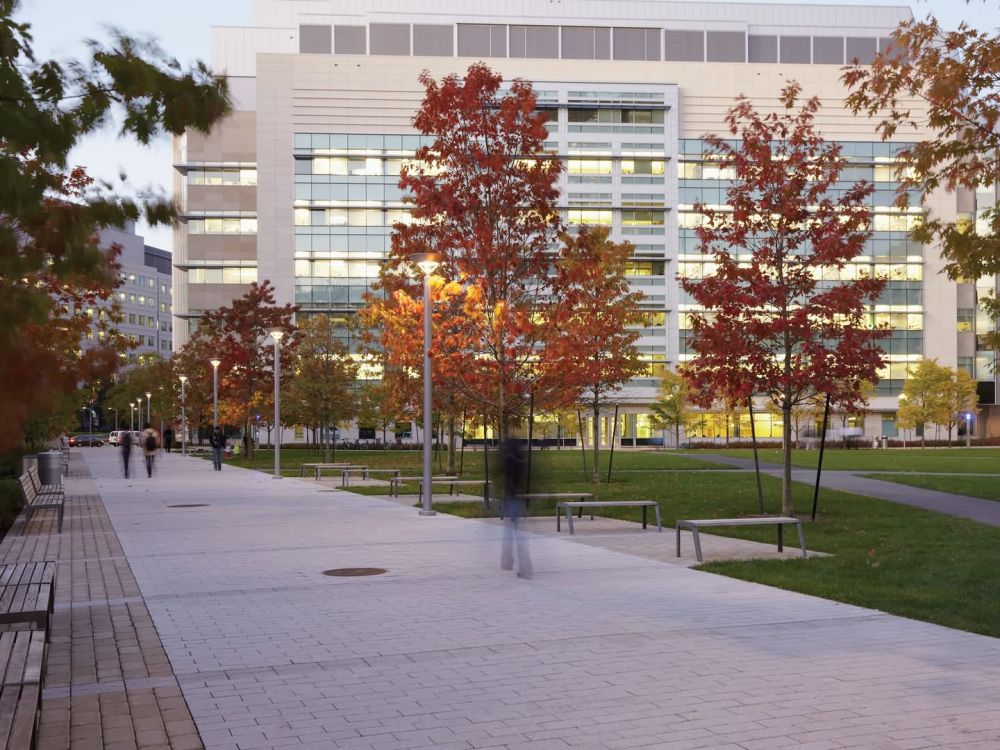在过去五年的时间里,我们策划了一套增量变革,将主要集团的无限走廊编织到邻近的商业建筑中,这些建筑是健康科学,制药和高科技公司的家园。北院的长廊和主街道空间通过完成主要集团的法院矩阵和连接路径,使这些重叠生活。
通道的设计语言唤起了麻省理工学院橡树林的其他地方的空间质量,单排和双排平面树和橡树 – 但具有明显的城市纹理。在长廊与主街相交的地方,广场捕获并过滤行人和自行车进入校园路径网络。该项目的走廊和广场也方便服务和交付,并整合了Frank O. Gehry的Stata中心的各种户外空间,减轻了该建筑物坚固的物体状态,激活了露天剧场和咖啡馆入口。 Mark Di Suvero的Aesop’s Fables II(2005)是麻省理工学院雕塑系列的永久性部分,重新定位了Di Suvero的协议,突出了四边形的南部边缘,突出了无限走廊的到达点。
Over a five-year period, we orchestrated an incremental set of transformations to knit the Main Group’s Infinite Corridor to neighboring commercial buildings that are home to health science, pharmaceutical, and high-tech companies. North Court’s promenades and Main Street spaces bring these overlaps to life by completing the Main Group’s matrix of courts and connective paths. The court was conceived as a fully framed, open field condition that supports significant campus rituals while carrying everyday, desire-line paths. The framing edges of the quad became intensively occupied passages—each employing a different character related to connecting points and programmatic adjacencies.
The design language of the passages evokes spatial qualities elsewhere at MIT—oak groves, single and double rows of plane trees and oaks—but with a distinctly urban texture. Where the promenades intersect with Main Street, plazas capture and filter pedestrian and bicycle traffic into the network of campus paths. The project’s corridors and plazas also facilitate service and delivery and integrates the varied outdoor spaces of Frank O. Gehry’s Stata Center, relieving that building’s insistent object status and activating its amphitheater and café entrances. Mark Di Suvero’s Aesop’s Fables II (2005), a permanent part of MIT’s sculpture collection, was repositioned with Di Suvero’s agreement to accentuate the southern edge of the quadrangle and highlight the arrival point at the Infinite Corridor.




















